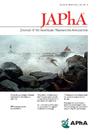Impact of health literacy-conscious medication educational videos on primary medication nonadherence rates
IF 2.5
4区 医学
Q3 PHARMACOLOGY & PHARMACY
Journal of the American Pharmacists Association
Pub Date : 2024-09-07
DOI:10.1016/j.japh.2024.102219
引用次数: 0
Abstract
Background
Primary medication nonadherence (PMN) occurs when a new medication is prescribed, but the patient does not obtain the medication, or an appropriate alternative. Medication knowledge may be a factor contributing to high PMN rates. A variety of approaches and technologies have been developed to enhance patient medication knowledge, though the impact of these interventions on PMN rates has not been studied.
Objectives
The objectives of this study were to: 1) compare community pharmacy PMN rates between pharmacies that offer patient medication educational video services and those that do not, and 2) assess the relationships between video service delivery and PMN status.
Methods
This cohort study utilized data from 6 pharmacies (3 case and 3 control). Adult individuals with a new electronic prescription for medications were assessed for PMN using the Pharmacy Quality Alliance measure specifications. A 6-month measurement period was used to assess if medications or an appropriate alternative were dispensed within 30 days. Descriptive statistics were used to evaluate differences in PMN rates between case and control pharmacies. The relationships between medication education video service use and PMN status were assessed using multivariable logistic regression models.
Results
A total of 4038 patients were included in the analyses, contributing 6311 prescriptions for PMN assessment. Case pharmacies had significantly lower (25.9% vs. 29.1%) PMN rates than control pharmacies (P = 0.0090). Prescriptions filled at pharmacies that utilized medication educational videos had lower odds of PMN status [odds ratio (OR) = 0.58 (0.43, 0.78)] than controls. Video use was associated with lower odds of PMN status [OR = 0.83 (0.70, 0.98)] when compared to prescriptions where patients did not receive the service.
Conclusions
The use of health literacy-conscious, patient educational videos were associated with improved (lower) PMN rates. Medication education technologies represent a scalable solution to improve PMN and medication access.
具有健康素养意识的用药教育视频对初级用药不依从率的影响。
背景:初级用药不依从(PMN)是指开具了新药处方,但患者没有获得该药或适当的替代药物。用药知识可能是导致高PMN率的一个因素。目前已开发出多种方法和技术来提高患者的用药知识,但这些干预措施对 PMN 发生率的影响尚未得到研究:本研究的目的是1)比较提供与不提供患者用药教育视频服务的药房之间的社区药房 PMN 发生率;2)评估视频服务提供与 PMN 状态之间的关系:这项队列研究利用了六家药房(三家个案药房,三家对照药房)的数据。采用药房质量联盟 (PQA) 的测量规范,对新开具电子处方的成人进行 PMN 评估。以 6 个月为衡量周期,评估是否在 30 天内配发了药物或适当的替代品。描述性统计用于评估病例药房和对照药房之间 PMN 发生率的差异。使用多变量逻辑回归模型评估了用药教育视频服务的使用与 PMN 状态之间的关系:共有 4038 名患者被纳入分析,6311 张处方接受了 PMN 评估。病例药房的 PMN 感染率(25.9% 对 29.1%)明显低于对照药房(P=0.0090)。与对照药房相比,在使用药物教育视频的药房开具的处方出现 PMN 状态的几率[OR = 0.58 (0.43, 0.78)]更低。与未使用视频服务的处方相比,使用视频服务的处方出现 PMN 状态的几率更低[OR = 0.83 (0.70, 0.98)]:结论:使用注重健康素养的患者教育视频与 PMN 发生率的提高(降低)有关。用药教育技术是改善 PMN 和用药情况的一种可扩展解决方案。
本文章由计算机程序翻译,如有差异,请以英文原文为准。
求助全文
约1分钟内获得全文
求助全文
来源期刊
CiteScore
3.30
自引率
14.30%
发文量
336
审稿时长
46 days
期刊介绍:
The Journal of the American Pharmacists Association is the official peer-reviewed journal of the American Pharmacists Association (APhA), providing information on pharmaceutical care, drug therapy, diseases and other health issues, trends in pharmacy practice and therapeutics, informed opinion, and original research. JAPhA publishes original research, reviews, experiences, and opinion articles that link science to contemporary pharmacy practice to improve patient care.

 求助内容:
求助内容: 应助结果提醒方式:
应助结果提醒方式:


